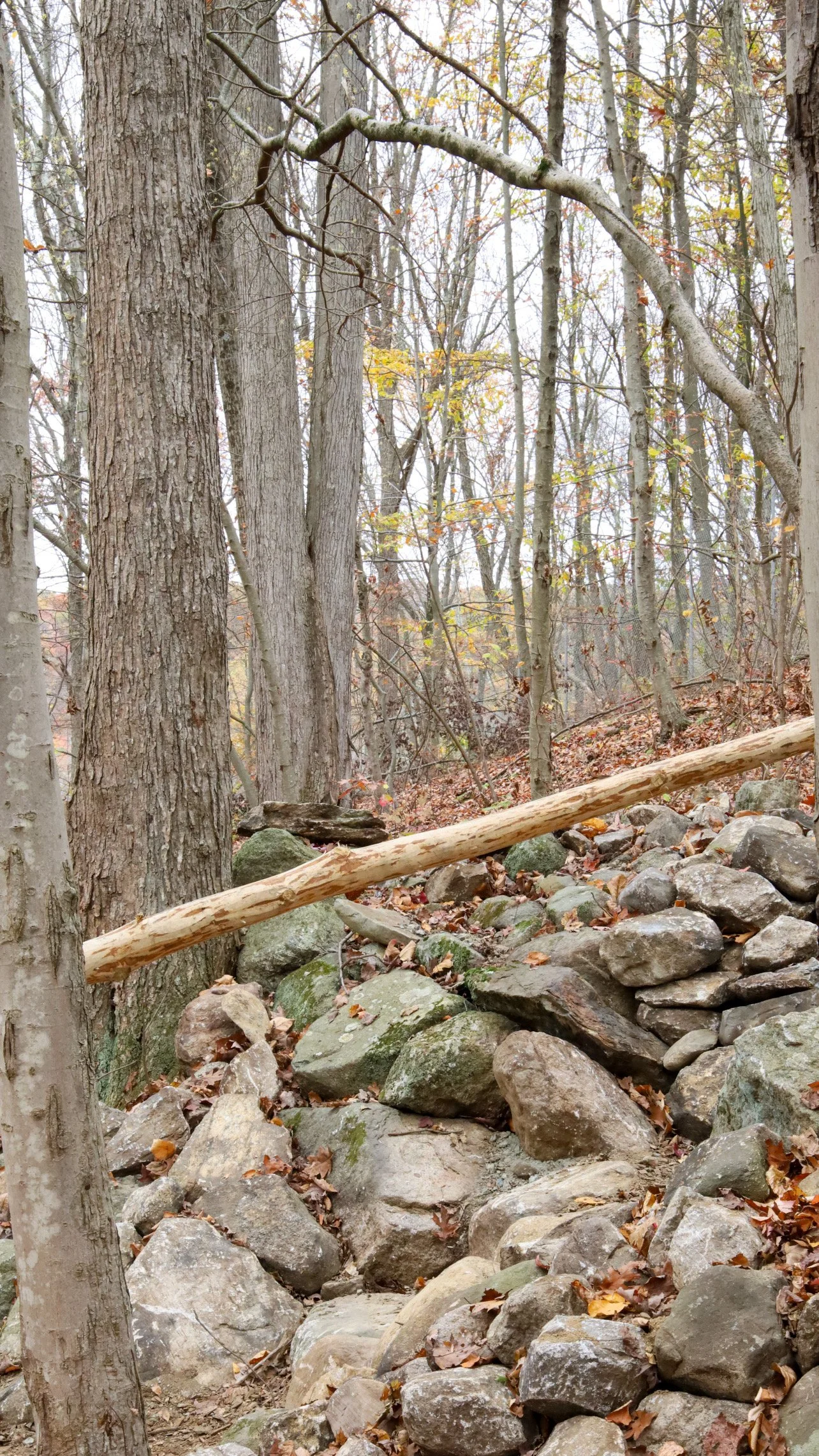Forest Portal
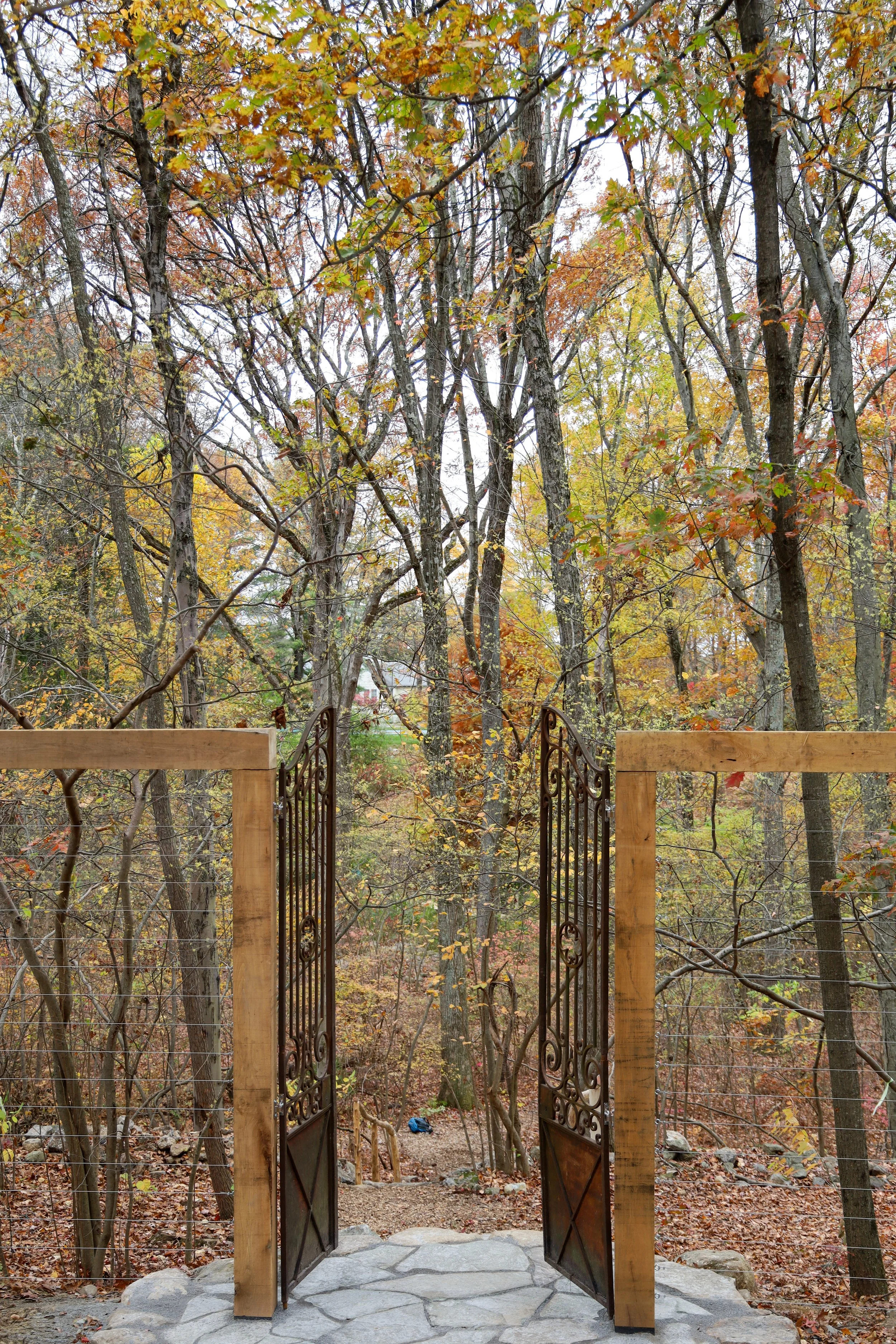
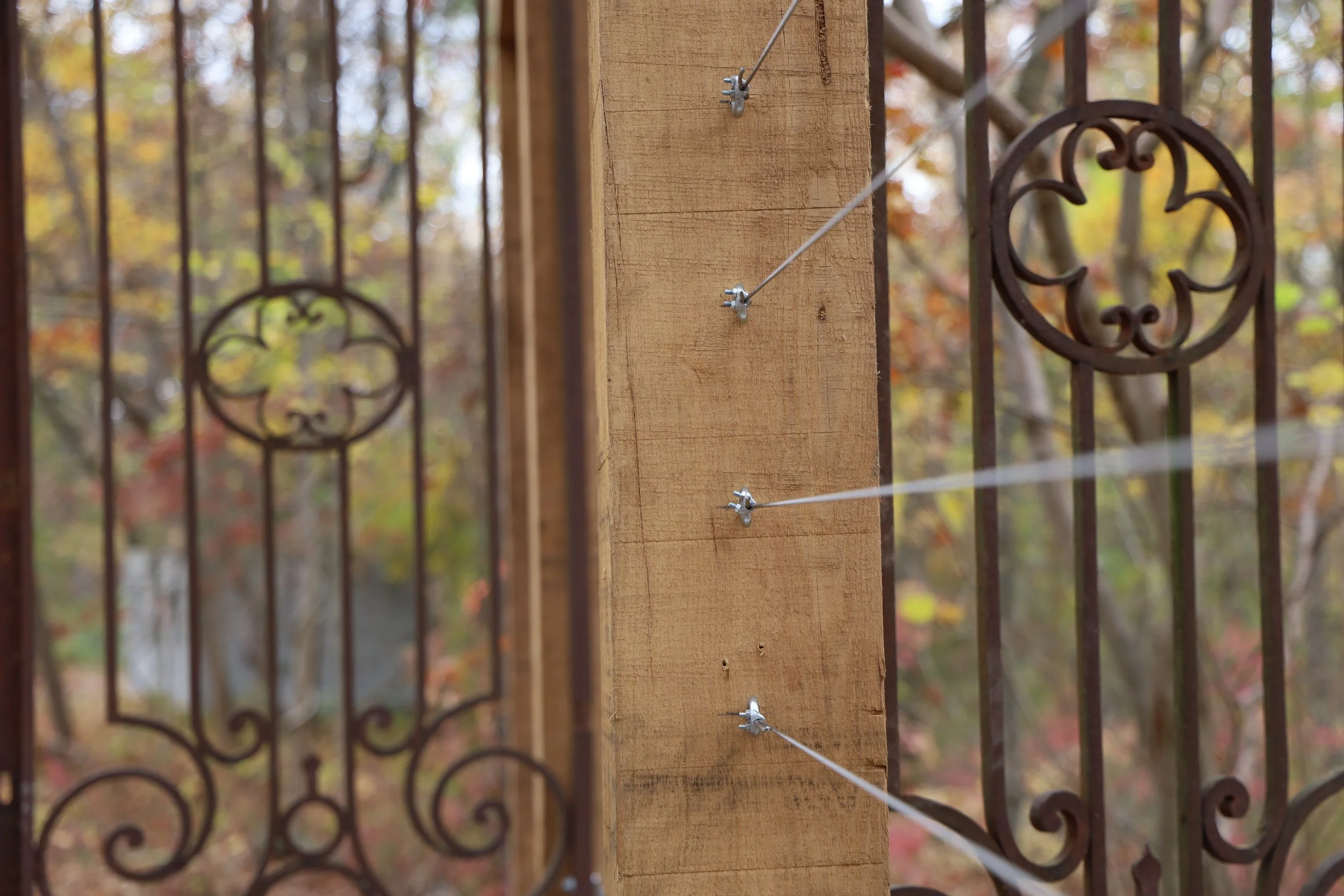
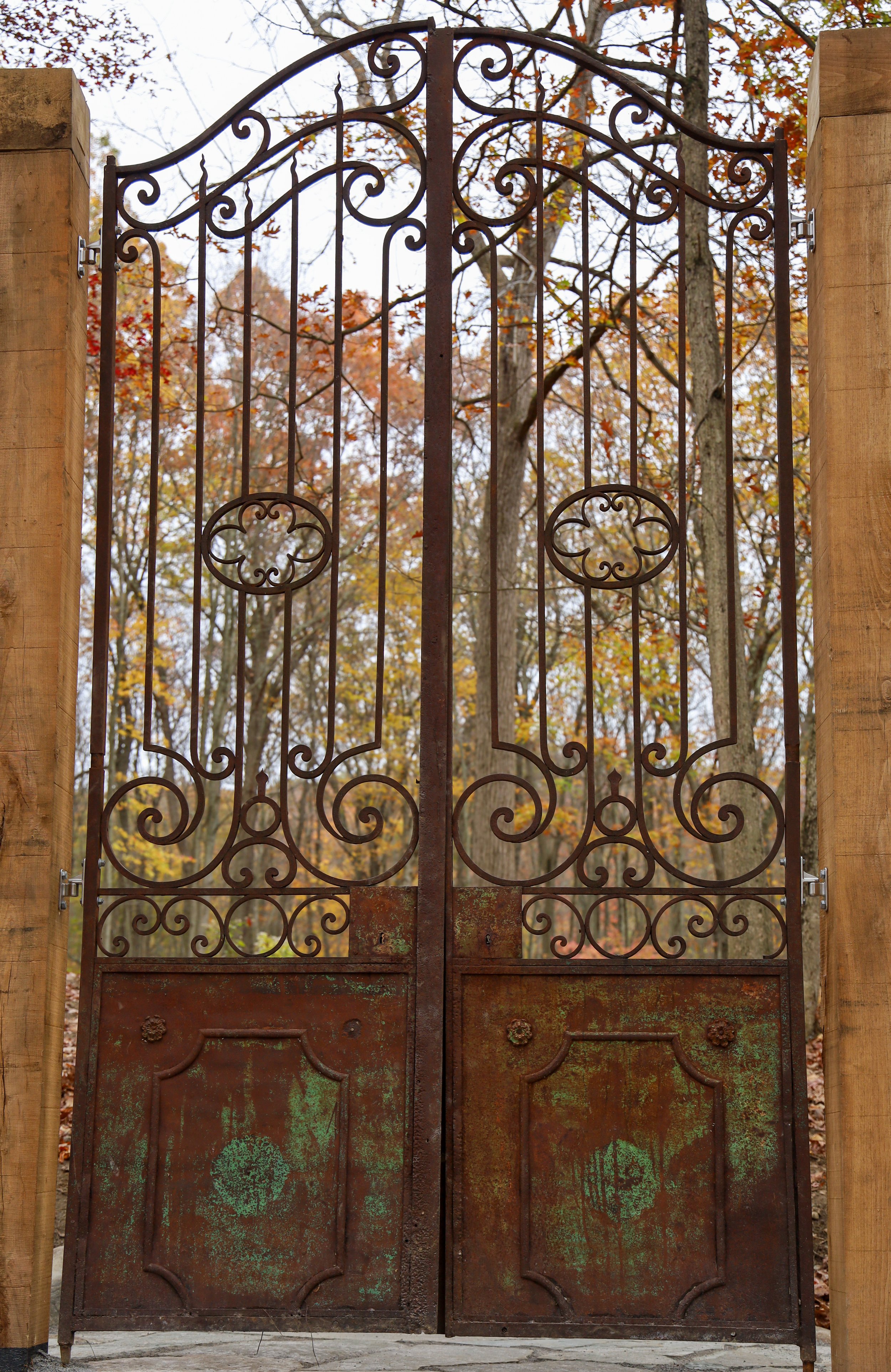


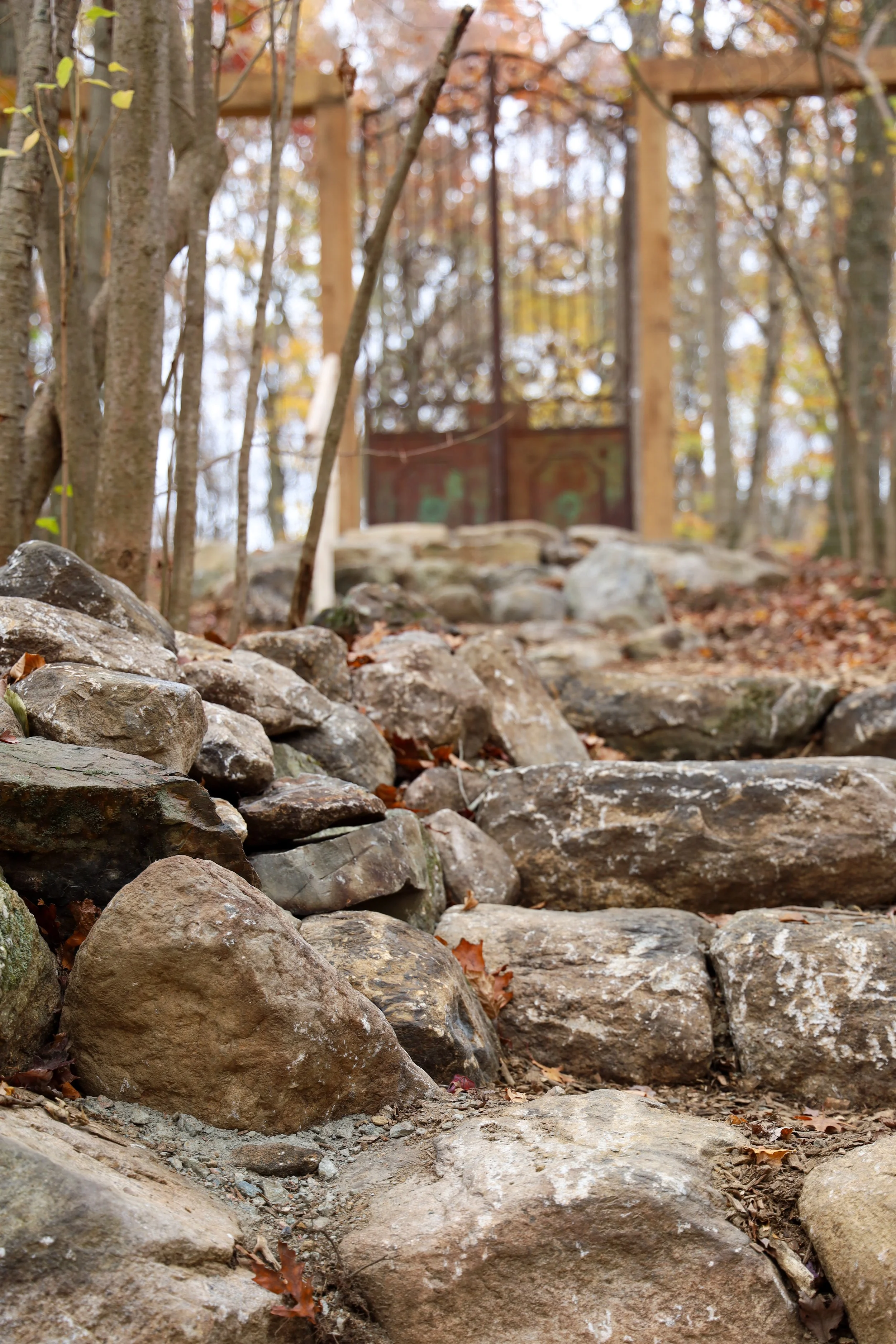
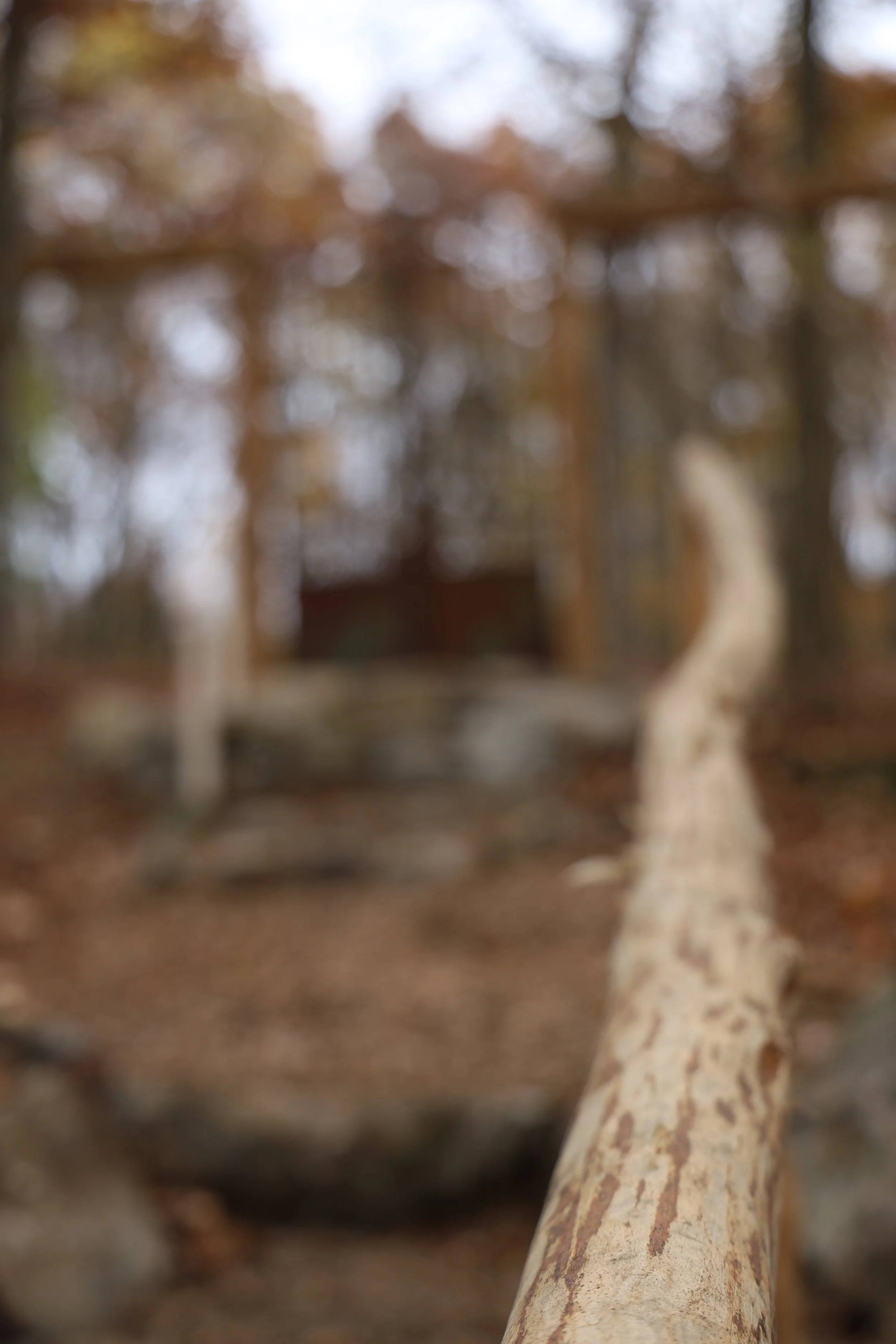
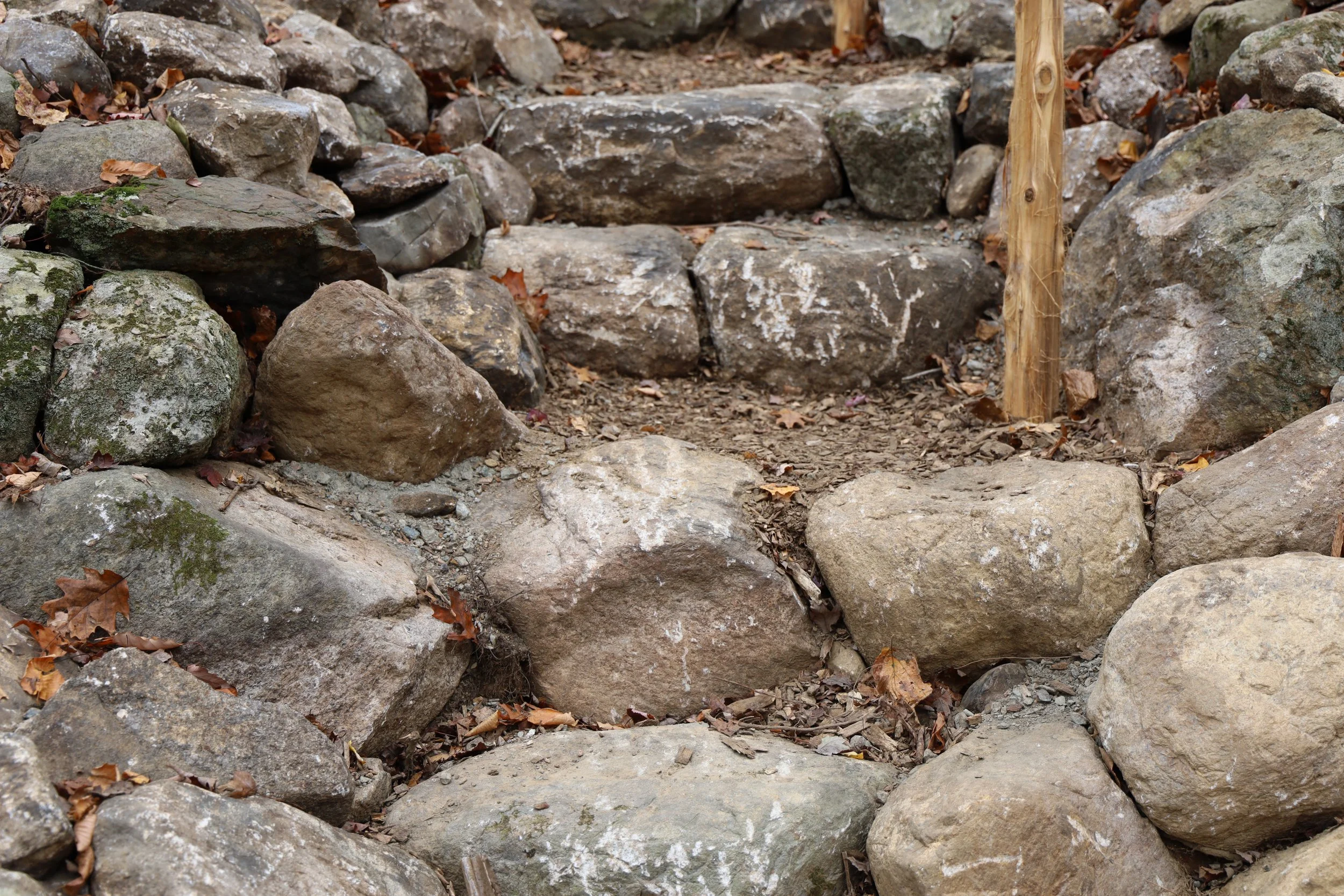
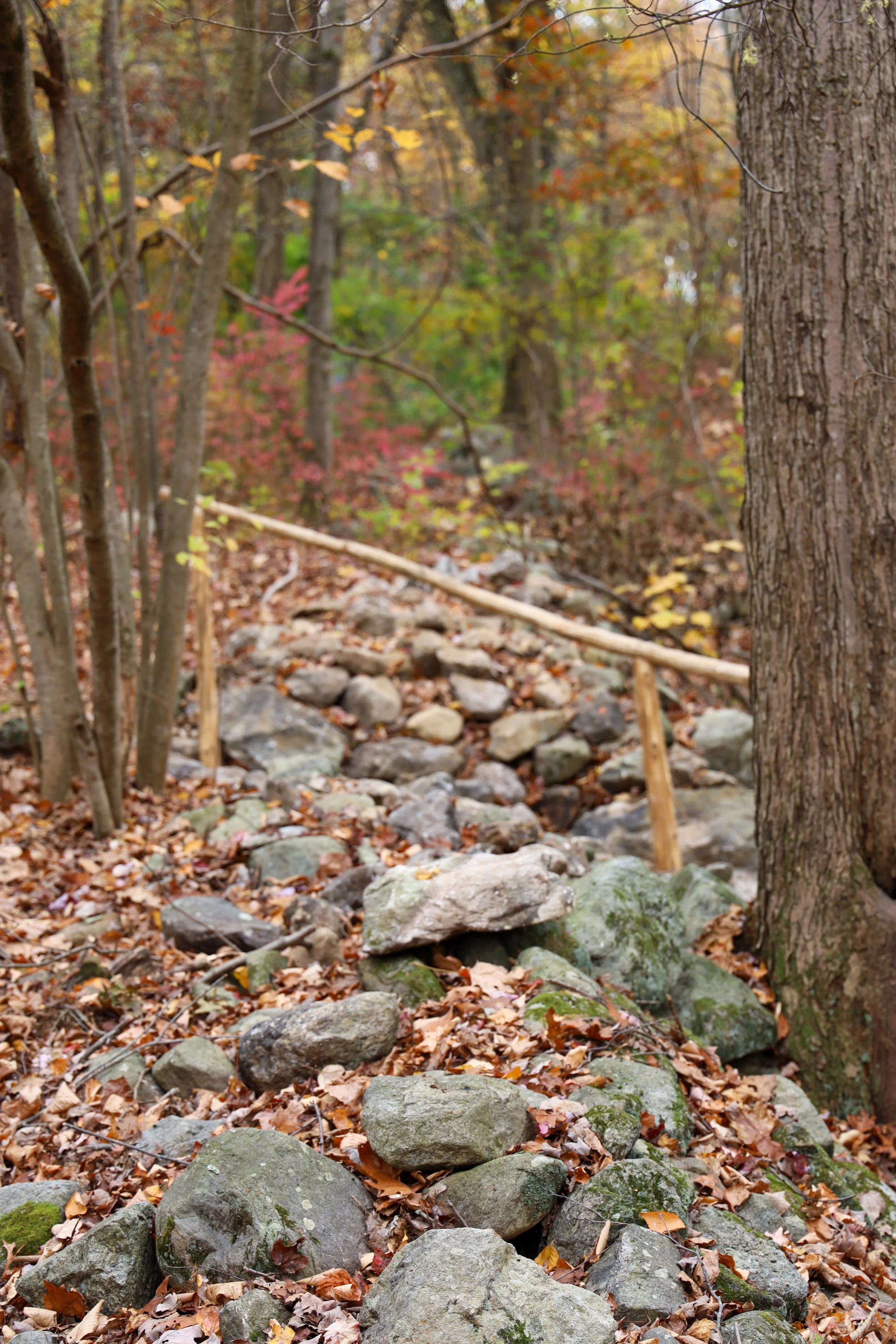
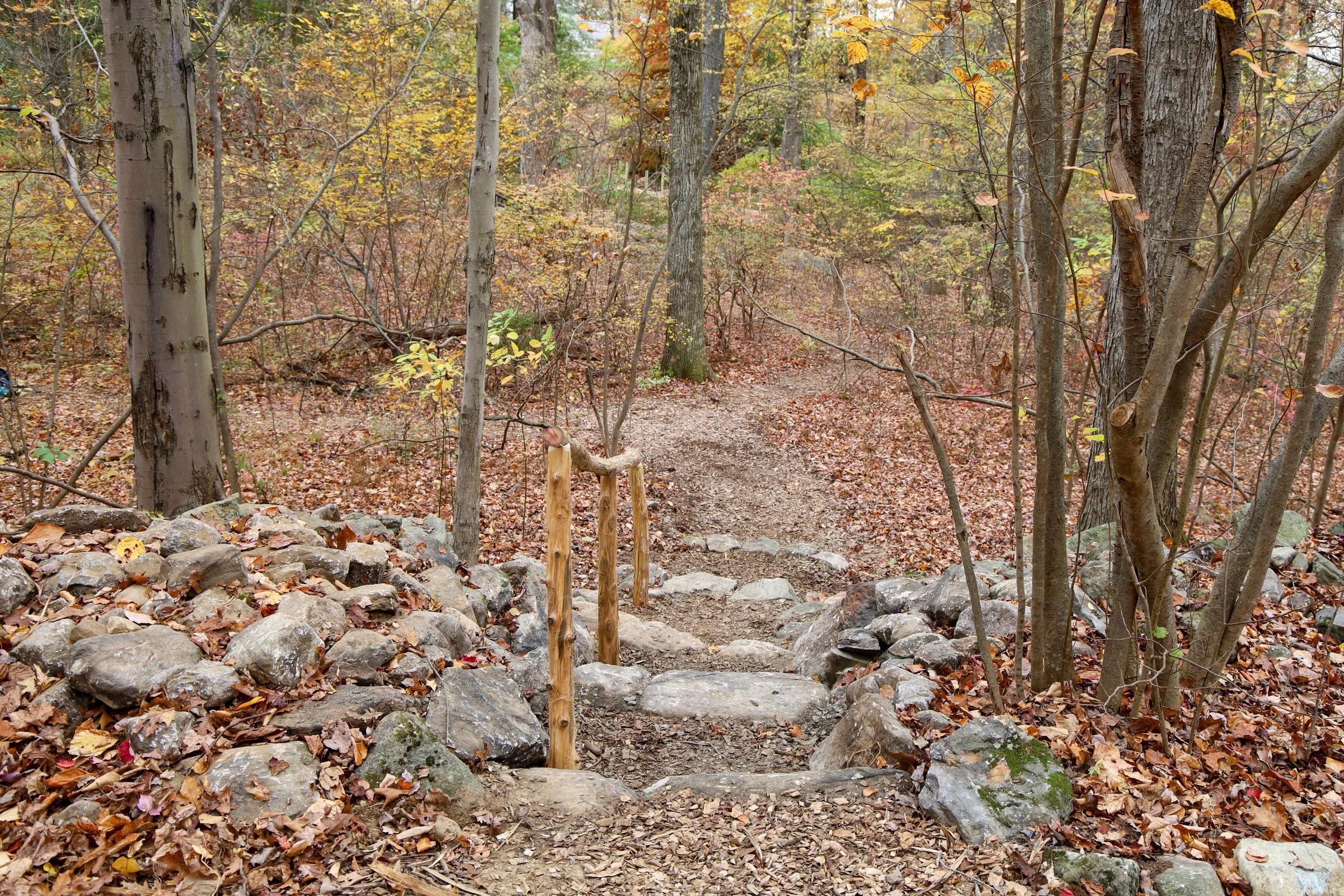









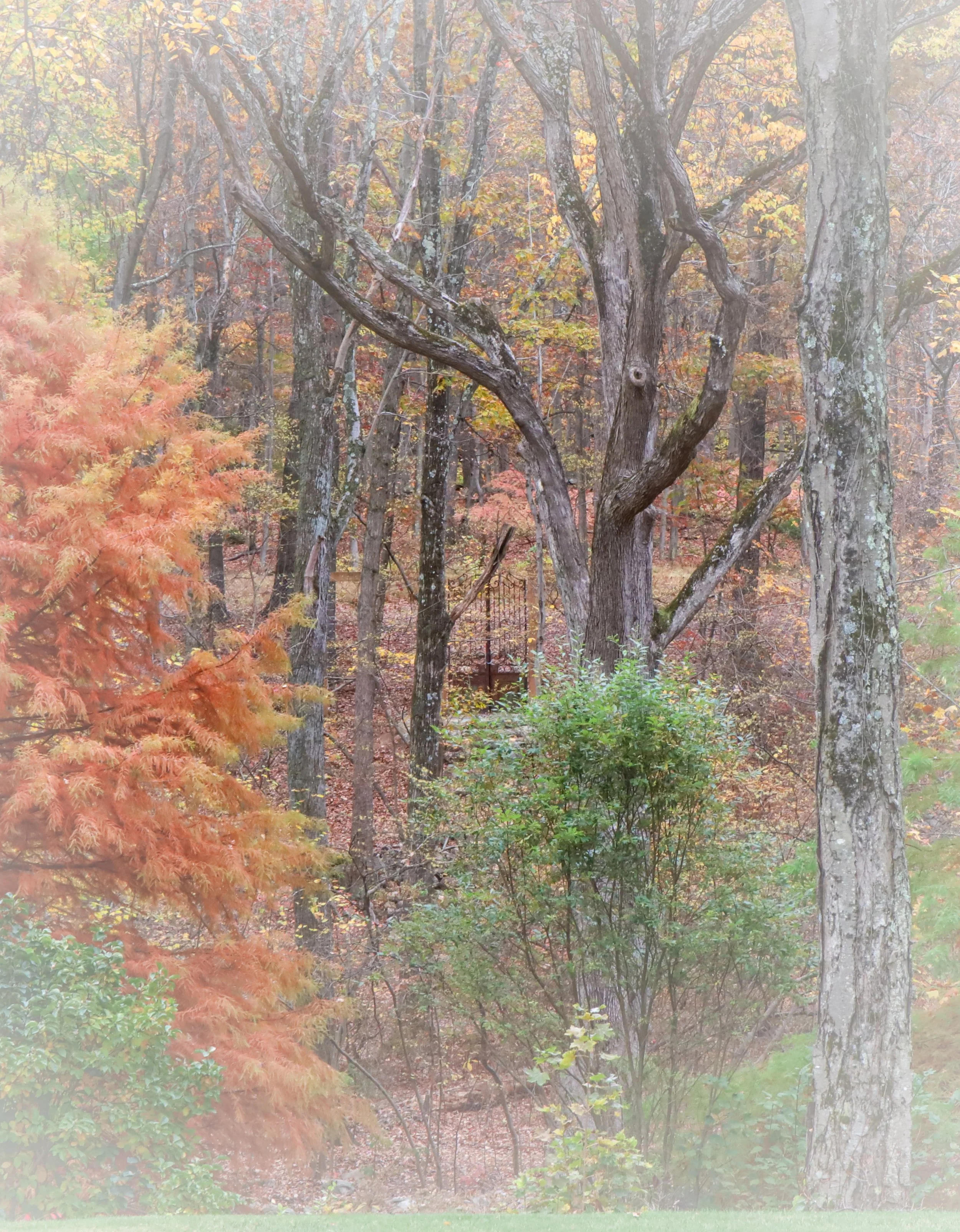

Nestled within the rolling topography of the Hudson Highlands, this project transforms a reclaimed set of wrought-iron gates into a sculptural threshold marking the passage between a shaded hollow and a restored meadow above. The gates stand as both functional infrastructure and symbolic gesture—framing a moment of arrival, transition, and renewal within a living landscape.
The gates were salvaged and re-imagined to span between two black locust posts, each 10 feet tall and 10 inches wide, sourced locally for durability and ecological appropriateness. Positioned to be visible from a bluff nearly 200 feet away, they act as a visual anchor—an invitation glimpsed across the valley that draws visitors into the heart of the garden.
The ironwork and posts interact dynamically with the surrounding woodland. The vertical rhythm of the locust uprights echoes the forest’s own columnar structure, their natural irregularities resonating with the trunks of beech, maple, and oak beyond. In certain vantage points, the black silhouette of the gates frames pockets of sky or understory light, momentarily turning the forest itself into architecture—rooms of shadow, texture, and movement. The weathered iron, with its filigree of curves and voids, allows the eye to pass through, layering depth and contrast against the shifting greens of the canopy and the cool grays of stone and bark. Together, these materials compose a dialogue between craft and ecology, between human order and the forest’s inherent geometry.
The approach to the gates unfolds as a journey through shifting terrain and ecological zones. From the bluff, visitors descend into a hollow along a stepping stone path that crosses a wetland before climbing a steep slope toward the hilltop. To navigate the incline, we carved a passage through an existing stone retaining wall, much like a river cuts through a glacier’s terminal moraine. Stones from the same wall were reused to form a circular landing beneath the gates, grounding the structure in the site’s geologic memory.
Along the path, selective pruning of witch hazel and spicebush creates a tunnel-like passage—a moment of compression and intimacy before emergence into the restored meadow beyond. Here, the gates replace a section of deer fencing, transforming a barrier into a portal that welcomes human passage while maintaining ecological protection. Handrails constructed from locally harvested and de-barked trees follow the contours of the steps, connecting craftsmanship with the forest ecology surrounding the site.
Together, these elements compose a spatial narrative of reclamation and renewal—where found materials, native plantings, and the act of movement through the land converge to express the Hudson Highlands’ enduring dialogue between wildness and design.

